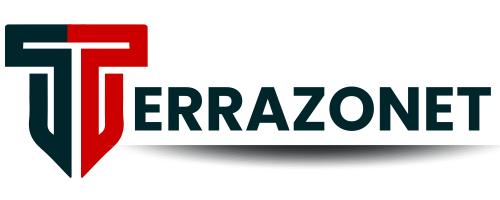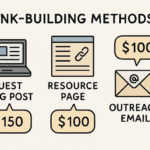Key Takeaways
- Structured interviews enhance the consistency and fairness of the hiring process.
- They significantly improve the predictive validity of candidate performance.
- Implementing structured interviews can reduce unconscious bias in recruitment.
Introduction to Structured Interviews
Recruiting top-tier talent is critical for organizations seeking sustained growth and competitiveness. Talent acquisition shapes the trajectory of any business, and selecting the proper method for evaluating candidates is a decision with far-reaching implications. Among the many interview methods available, the structured interview stands out as a proven approach designed to bring uniformity and equity to candidate evaluations. By asking every applicant the same set of predetermined questions in a consistent sequence, hiring teams are better equipped to compare candidates and make unbiased decisions fairly.
In today’s fast-evolving employment market, organizations cannot afford a process riddled with inconsistencies or subjectivity. The standardized framework provided by structured interviews supports organizations in achieving data-driven selections and fosters transparency, making the process easier to audit and refine for future improvements. Structured interviews also simplify compliance with employment regulations and demonstrate a commitment to fairness in recruitment, which top candidates and industry regulators increasingly value.
The Predictive Power of Structured Interviews
One of the structured interview’s most compelling advantages is its predictive validity. According to a comprehensive meta-analysis published in Harvard Business Review, structured interviews yield a predictive validity coefficient of 0.63 in forecasting on-the-job performance, far exceeding the 0.20 coefficient of unstructured interviews. This substantial gap underscores how a systematic approach to questioning and evaluation can lead organizations to hire individuals more likely to succeed in their roles, ultimately driving operational excellence.
The predictive power of structured interviews can be attributed to their carefully designed questions and scoring rubrics, which focus on real-life job requirements. Structured interviews often use a combination of behavioral and situational questions, prompting candidates to share examples that are directly related to the demands of the position. As a result, employers can reliably assess whether a candidate’s past behaviors or problem-solving skills align with the challenges they will face, improving the quality of their hiring pipeline and reducing costly turnover rates.
Mitigating Unconscious Bias
Unconscious bias—deep-seated attitudes and stereotypes impacting decision-making—poses a hidden risk in traditional interviews. Structured interviews address this concern by ensuring each candidate is assessed solely on job-relevant factors. By using a clearly defined set of questions and scoring benchmarks, employers minimize the opportunity for subjectivity, supporting fairer and more inclusive hiring practices. This standardization helps break cycles of homogeneity and opens opportunities for greater workplace diversity.
Moreover, when interviewers follow a standardized process, they are less likely to be influenced by irrelevant details such as a candidate’s appearance, accent, or even unintentional small talk that can sway assessments in conventional formats. Removing the room for improvisation and “gut feeling” relies on measurable standards and ensures that all candidates are evaluated equitably. Studies have shown that structured interviews significantly reduce disparities in hiring outcomes for underrepresented groups, helping organizations drive diversity and foster a more inclusive organizational culture.
Enhancing Candidate Experience
The candidate’s perception of the recruitment process can shape the employer brand and affect future talent pipelines. Major organizations such as Google have reported that structured interviews contribute to a more transparent, respectful, and objective experience for applicants, leading to higher satisfaction rates among successful and unsuccessful candidates. Candidates who find the process consistent and relevant are more likely to advocate for the employer, improving reputation and attracting talent.
From the candidate’s perspective, structured interviews offer predictability and clarity about expectations. Knowing that all applicants are asked the same questions assures candidates of fairness and builds trust in the organization’s professionalism. Even those who are not ultimately selected leave with a positive impression, increasing the chances of them applying again or recommending the company to peers. This ripple effect enhances the employer’s talent community and fuels a positive recruitment cycle.
Implementing Structured Interviews: A Step-by-Step Guide
- Define Job Competencies: Begin by clearly outlining the key skills, knowledge, and attributes necessary for success in the role. This sets the stage for targeted, meaningful questions that relate directly to performance. Engaging stakeholders—such as current job holders, managers, and even team members—can provide valuable input and ensure all relevant attributes are considered.
- Develop Standardized Questions: Craft questions around core competencies. Both situational and behavioral questions prompt candidates to demonstrate how they’ve handled relevant scenarios, ensuring alignment with organizational needs. Practical questions avoid ambiguity and focus on eliciting examples that reveal practical abilities and attitudes.
- Establish Evaluation Criteria: Build a scoring rubric detailing a strong, average, or weak answer. Clear benchmarks make it easier to assess candidates objectively. Involving multiple interviewers in creating the rubric can reduce individual bias and provide a balanced set of criteria that reflects technical and interpersonal requirements.
- Train Interviewers: Comprehensive training ensures interviewers know how to ask questions, use the rubric, and avoid introducing bias. Consistency in interviewer approach is just as essential as consistency in questions. Training should include practice interviews, calibration sessions, and education about the risks of unconscious bias.
- Conduct Interviews Consistently: Apply the structured format for every applicant, asking all predetermined questions and scoring according to the rubric. Documenting responses supports comparative analysis. Using standardized forms or digital tools can further streamline and safeguard the consistency of this stage.
- Review and Calibrate: After several interview cycles, evaluate the process for effectiveness and fairness. Gather feedback, review results, and update questions or criteria as needed to ensure continued relevance and accuracy.
Challenges and Considerations
Despite their numerous benefits, structured interviews require considerable planning and foresight. Developing relevant, well-calibrated questions and scoring rubrics can be time-intensive, and the need for interviewer training represents an ongoing investment. Critics also point out that strictly adhering to predetermined questions may suppress more natural conversation, limiting opportunities to assess cultural fit or uncover unexpected strengths. Organizations must balance structure with occasional flexibility, ensuring they capture a complete picture of each candidate while maintaining fairness and consistency.
Additionally, structured interviews are not a substitute for critical recruitment stages such as skills assessments, reference checks, and realistic job previews. They work best as part of a holistic hiring strategy. Companies should periodically review their structured interview processes, seeking regular feedback from interviewers and candidates, so the system can evolve with business needs and changing workforce dynamics.
Conclusion
Structured interviews have emerged as an indispensable tool for forward-thinking organizations. Structured interviews support better hiring decisions, improved performance, and greater inclusion by instilling rigor, transparency, and objectivity in the hiring process. Although effective implementation demands effort and resources, the result is a recruitment process that reliably identifies the best candidates and positions organizations for long-term success. Continually evolving the process ensures that organizations can adapt to new recruitment challenges while upholding the highest standards of fairness and effectiveness.
YOU MAY ALSO LIKE: Questions to Ask Before Hiring a Facebook Ads Agency



















